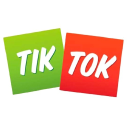We Made $60,000 From A Product We Built In 3 Weeks
Hello! Who are you and what business did you start?
Hi, this is Sveta Bay, co-founder of FounderPal. We create AI-powered marketing tools for Solopreneurs.
Entrepreneurs struggle with understanding their target audience, defining positioning, and generating marketing ideas — we fix that.
Our main product is Marketing Strategy Generator. An interactive platform to find a unique marketing direction and then transform it into actionable marketing tasks. It brings us around $10,000/mo via one-time payments.

What's your backstory and how did you come up with the idea?
We started Indie Entrepreneurship two years ago with MakerBox. After years of working with teams, we both wanted to spend less on communication...

Download the report and join our email newsletter packed with business ideas and money-making opportunities, backed by real-life case studies.

Download the report and join our email newsletter packed with business ideas and money-making opportunities, backed by real-life case studies.

Download the report and join our email newsletter packed with business ideas and money-making opportunities, backed by real-life case studies.

Download the report and join our email newsletter packed with business ideas and money-making opportunities, backed by real-life case studies.

Download the report and join our email newsletter packed with business ideas and money-making opportunities, backed by real-life case studies.

Download the report and join our email newsletter packed with business ideas and money-making opportunities, backed by real-life case studies.

Download the report and join our email newsletter packed with business ideas and money-making opportunities, backed by real-life case studies.

Download the report and join our email newsletter packed with business ideas and money-making opportunities, backed by real-life case studies.


















